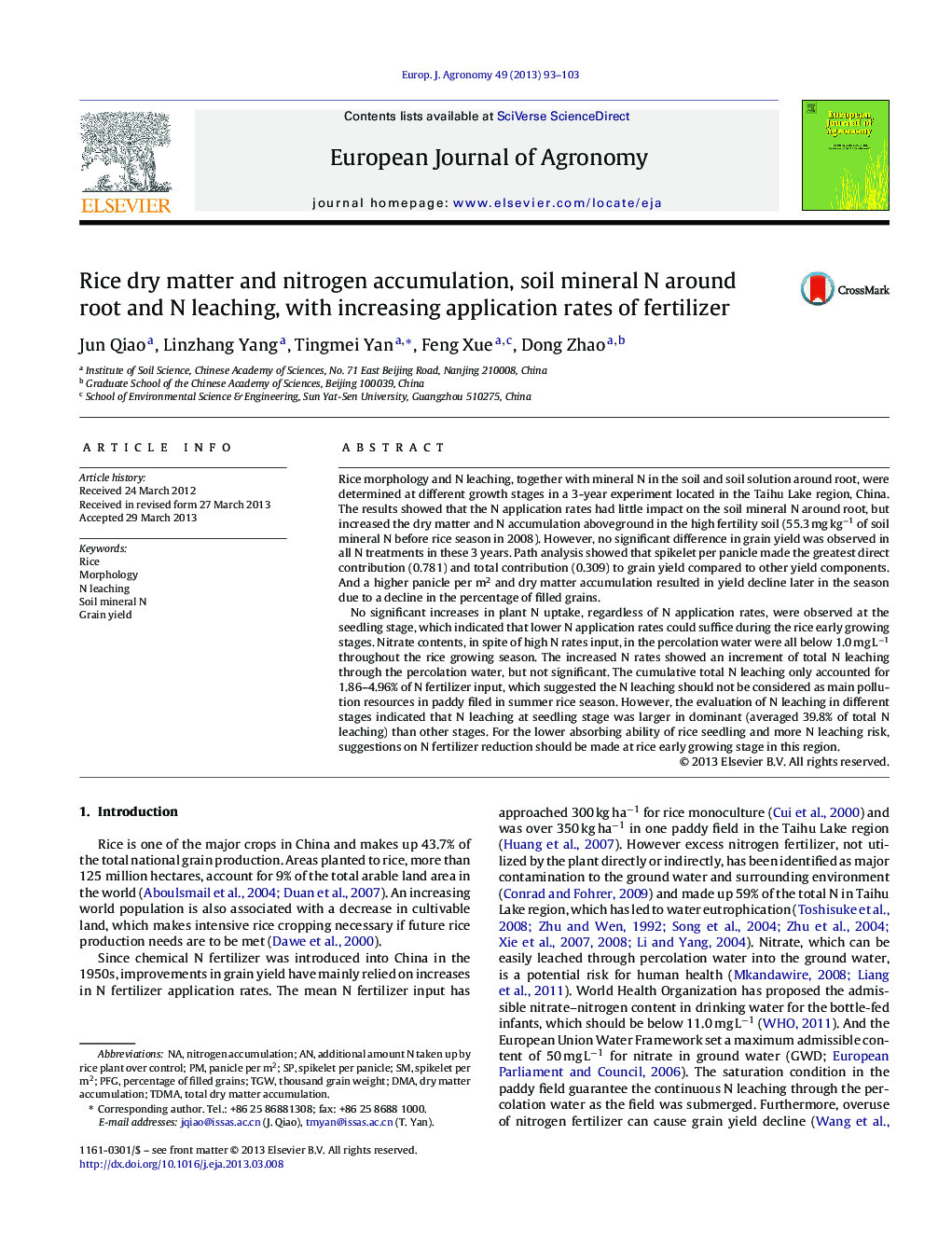| Article ID | Journal | Published Year | Pages | File Type |
|---|---|---|---|---|
| 4509091 | European Journal of Agronomy | 2013 | 11 Pages |
•Different N application rates had little impact on the soil mineral N concentration around root, but increased the rice dry matter and N accumulation aboveground.•N leaching should not be considered as main pollution resources in paddy filed in summer rice season.•N fertilizer reduction should be made at rice early growing stage in Taihu Lake region.•Spikelet per panicle made the greatest direct contribution and total contribution to grain yield.
Rice morphology and N leaching, together with mineral N in the soil and soil solution around root, were determined at different growth stages in a 3-year experiment located in the Taihu Lake region, China. The results showed that the N application rates had little impact on the soil mineral N around root, but increased the dry matter and N accumulation aboveground in the high fertility soil (55.3 mg kg−1 of soil mineral N before rice season in 2008). However, no significant difference in grain yield was observed in all N treatments in these 3 years. Path analysis showed that spikelet per panicle made the greatest direct contribution (0.781) and total contribution (0.309) to grain yield compared to other yield components. And a higher panicle per m2 and dry matter accumulation resulted in yield decline later in the season due to a decline in the percentage of filled grains.No significant increases in plant N uptake, regardless of N application rates, were observed at the seedling stage, which indicated that lower N application rates could suffice during the rice early growing stages. Nitrate contents, in spite of high N rates input, in the percolation water were all below 1.0 mg L−1 throughout the rice growing season. The increased N rates showed an increment of total N leaching through the percolation water, but not significant. The cumulative total N leaching only accounted for 1.86–4.96% of N fertilizer input, which suggested the N leaching should not be considered as main pollution resources in paddy filed in summer rice season. However, the evaluation of N leaching in different stages indicated that N leaching at seedling stage was larger in dominant (averaged 39.8% of total N leaching) than other stages. For the lower absorbing ability of rice seedling and more N leaching risk, suggestions on N fertilizer reduction should be made at rice early growing stage in this region.
